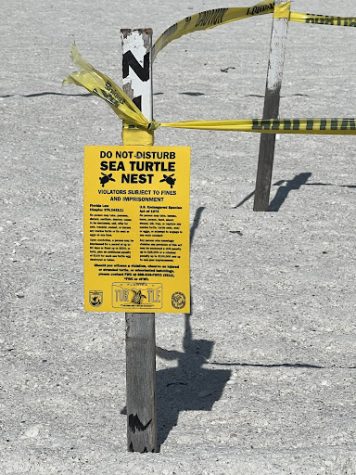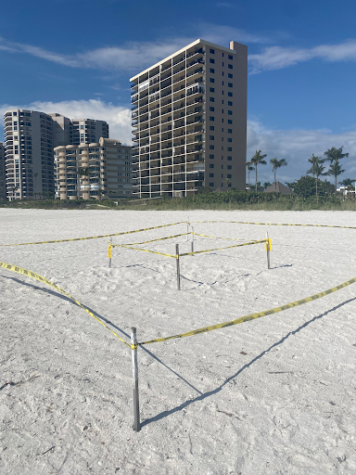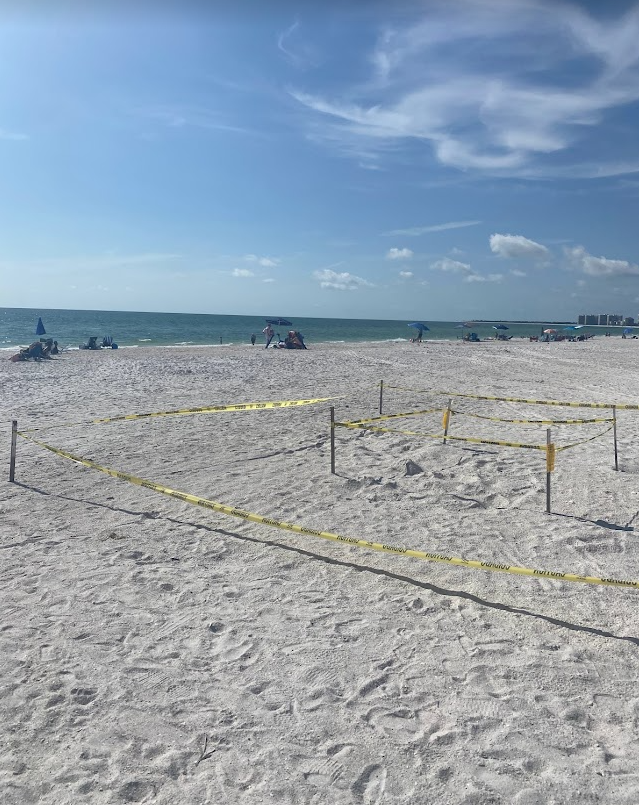Sea Turtles and Light Pollution on Marco Island
Sea turtle nesting is prominent along the shore of Marco Island.
May 19, 2023

Every year, sea turtles can be seen nesting on the white, sandy beaches of Marco Island. These sea turtles, female loggerhead sea turtles, only nest from May through early August. These nests typically contain 80-120 eggs. After about 60 days, the eggs hatch into baby turtles. However, these turtles are on the endangered species list, and the Florida Fish and Wildlife Conservation Commission (FWC) and the state of Florida is doing their best to protect them.
Turtles nest on beaches instead of water for a very simple reason: they breathe air. The egg has a membrane that allows the turtles to breathe through it. However, because of this membrane, the egg itself is very weak. This is why they nest underground; the sand protects them. If this sand is disrupted by outside sources, then the eggs are at risk of damage. Because of this, turtle nests are taped off in sections that warn residents and tourists alike of fines and certain legal consequences if they were to tamper with any of the sand surrounding or behind the tape. On average, there are approximately 80 sea turtle nests on Marco Island per year.
The biggest threat to the turtle’s nesting is human involvement, one of the worst being light pollution. Light pollution occurs when outdoor lights shoot their light upwards into the night sky, thus dimming the light getting emitted from both the stars and the moon. The turtles use this light to lead themselves to the ocean after they are hatched.

A common natural cycle that light pollution disrupts is turtle migration from their nesting sites to the water. Turtles hatch at night and crawl from their nests to the ocean. This nocturnal aspect is to protect themselves from possible predators, such as birds and racoons, that can easily see them in the daylight. Baby sea turtles get to the ocean by following the moonlight. Because of the high amount of light pollution that disrupts the turtle’s navigation, it becomes difficult for them to be able to make it to the ocean. These disoriented baby turtles end up trekking in circles and are often either picked off by predators or die of starvation and exhaustion.
It is very important to limit human involvement in the natural cycles of sea turtles. Most sea turtle species are already on the endangered species list. Limiting human involvement to prevent harm to the sea turtles during their nesting seasons will be one less issue that they have to keep an eye out for. Making sure humans limit the amount of light pollution that they produce at night is crucial in making sure these sea turtles remain out of harm’s way.








